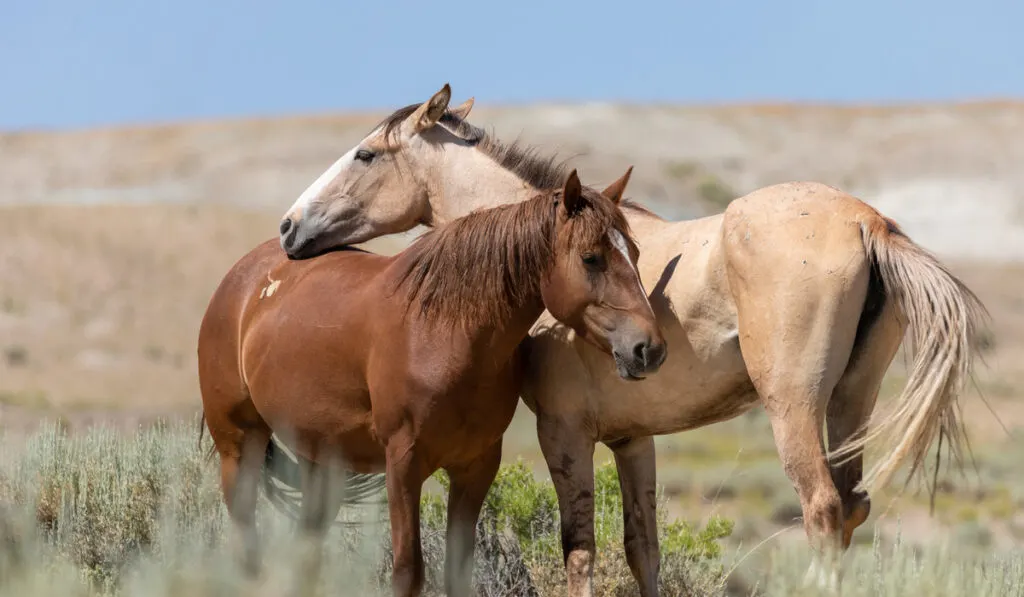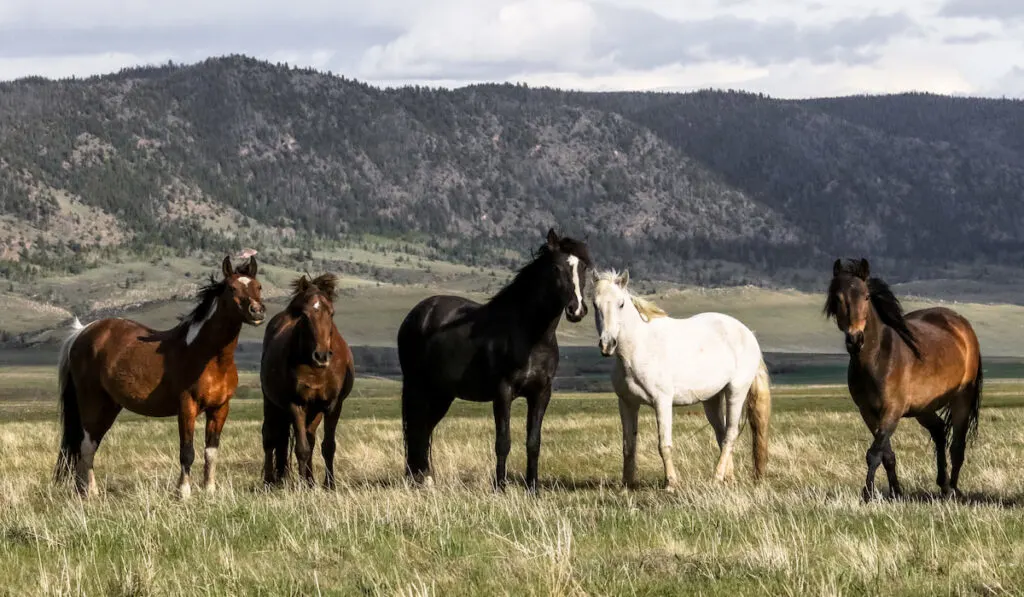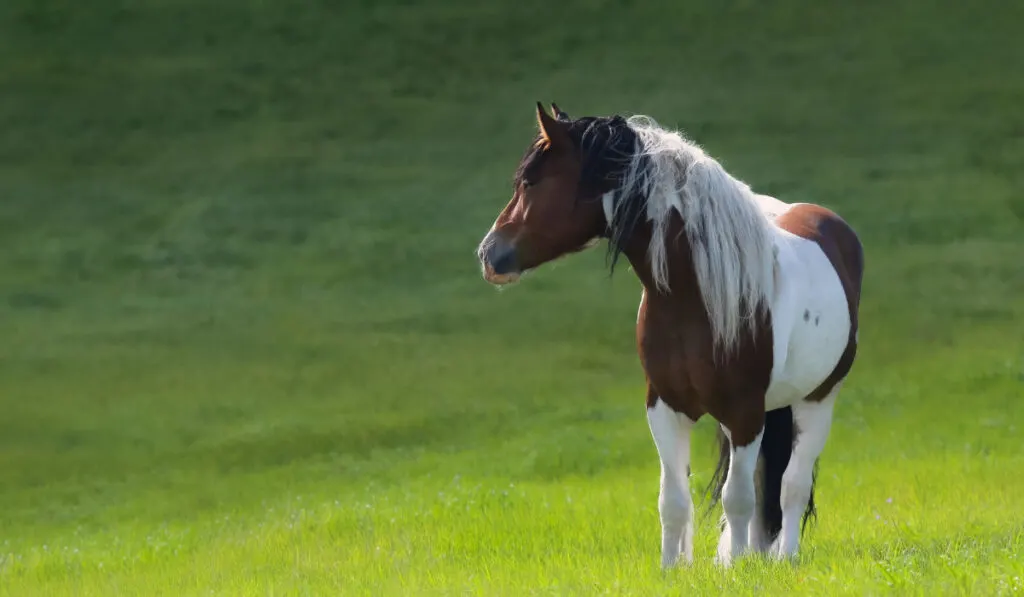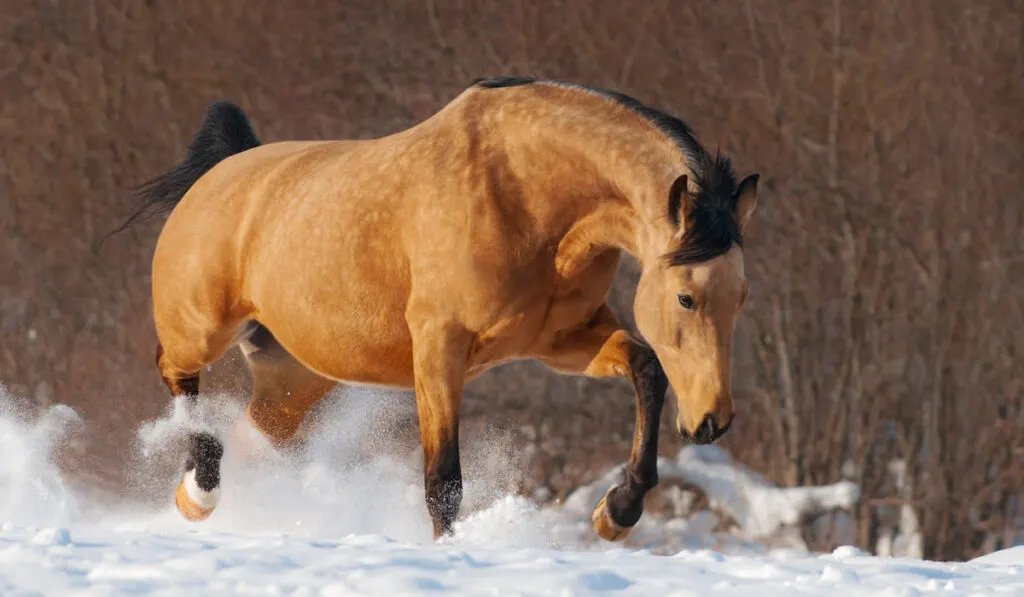Wild horses are idolized and revered around the world. In the United States, they hold an especially important place. The horse was instrumental to America’s history and the American wild horse populations arose from horses that were turned loose or escaped. But, the United State’s isn’t the only place wild horses can be found. These 35 facts about wild horses will hopefully give you some things to ponder!

These facts are organized by category. Unless otherwise stated, most of these wild horse facts were obtained from Wikipedia and compiled for you here. The exceptions to this should have their source individually listed.
- The only truly wild horse is the Przewalski’s horse which lives in Mongolia.
- Przewalski’s horses have more chromosomes than domestic horses. (source)
- Most wild horses in the world are actually descendants of domesticated horses, this makes them technically feral and not wild.
- Wild horses range in size from 11 hands tall to over 16 hands tall.
- Wild horses browse on a variety of native grasses, shrubs, and forbs. (Learn what wild horses eat in this article)
Wild Horses in the United States
I have first-hand experience in working with over 1,000 wild horses and burros and finding them adoptive homes. I obtained them straight from the Bureau of Land Management, trained them and helped adopters with the paperwork to get them adopted.

The following facts about wild horses in the United States are from my own personal, first-hand knowledge or research I did for other articles.
- The modern-day mustang horses are not native to North America.
- The United States is home to many types of wild horses, and not all of them are called mustangs. (Read my article, Types of Mustang Horses in the United States, to learn more!)
- Mustang horses come in almost every color as their domestic counterparts.
- Wild horse herds in the United States are maintained by various entities including the Bureau of Land Management, National Parks, Forest Service, individual states and Native American tribes.
- Some wild horse herds have unique horses that carry a gene for a curly coat.
- The BLM will pay up to a $1,000 incentive for individuals who adopt a wild mustang.
- The adoption fee for a wild mustang can be as low as $25.
- Wild mustangs managed by the Bureau of Land Management (BLM) are broken up into several different herd management areas (often abbreviated as HMA).
- BLM manages wild mustangs in Arizona, California, Colorado, Idaho, Montana-Dakotas, Nevada, New Mexico, Oregon, Washington, Utah and Wyoming.
- Wild horses have been observed eating meat but it is a very rare occasion.
- It is illegal to feed wild horses.
- Contrary to popular belief, you can sell a BLM mustang as long as it has a Certificate of Title.
- BLM mustangs are branded with alpha-angle symbols which can be translated to a unique identifying number. (Learn how this mustang brand is decoded in this article)
- The BLM does NOT sell horses to slaughter.
- Once a mustang horse has its title, it is no longer the property of the government. As such, the government does not track ownership transfers after this point.
Wild Brumbies in Australia

The wild brumby deserves its own section. Australia is home to the largest wild horse population of any country.
- In Australia, wild horses are called brumbies.
- There are over 400,000 brumbies in Australia.
- Australian brumbies are considered both a pest and a resource. (source)
- One of the methods used in Australia to control the brumby population is by shooting horses from a helicopter. Unlike with the BLM in the United States, these horses never get the opportunity to be adopted.
- Wild brumbies in Australia are also removed by gathering and trapping.
- Australia has some programs in place to promote the training and adoption of the brumby.
- Areas where brumbies roam negatively affect wild, native species like birds, reptiles and macropod’s (like the Wallaby).
- Approximately 30% of the horse meat exported from Australia comes from the brumby population.
- Brumby hides and hair are sold as a by-product of the Australian horse meat industry.
- Horses first arrived in Australia in 1788.
Wild Horses in Other Countries

Wild horses roam other countries besides Australia and the United States, though, in much smaller populations. In fact, it is possible for “wild horses” to roam any area where horses were brought in as domestic stock and then released or escaped into the wild.
- Portugal has two different types of wild horses called the Sorraia and the Garrano.
- The Sorraia horse is most known for its grulla or dun coloring and primitive features.
- A small herd of around 400 wild horses lives in Bosnia and Herzegovina and enjoy protected status.
- The Bosnian Pony (also called Bosnian Mountain Horse) makes up about 70% of the horse population in that country.
- A small herd of around 80 wild horses makes its homes in the Dibru-Saikhowa National Park in India.
I hope you have enjoyed these 35 wild horse facts. I’ll add to the list as time allows. There are so many amazing facts about wild horses it would be impossible to list them all here!

